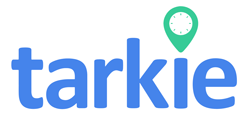Ever thought about how simple employee attendance records can shape big business plans? In today’s fast-paced world, attendance data has become key for making smart forecasts. It helps companies make better decisions by understanding how people work.
By looking into these records, businesses can plan their teams better. They can also predict changes in demand and handle complex plans. Whether you run a small shop in the Philippines or a big company, using attendance data wisely can change how you manage your business.
Key Takeaways
- Effective use of attendance data enhances business forecasting accuracy.
- Data-driven decisions lead to improved workforce management and operational efficiency.
- Understanding attendance trends helps in anticipating demand shifts.
- Timely adjustments based on real-time data improve overall strategy execution.
- Combining qualitative and quantitative forecasting methods yields better insight.
- Attendance insights can guide budget allocations and resource management.
The Importance of Attendance Data in Business
Attendance data is key in business management. It helps companies improve employee productivity. With accurate records, businesses can manage their workforce better and plan for staffing needs.
Companies use data analytics to create reports on attendance. This helps managers tackle attendance problems early. By looking at attendance patterns, they can find and fix issues in specific departments.
Predictive analytics add more value to attendance data. It uses algorithms to predict when employees might be absent. This lets companies adjust their staff or start wellness programs before problems arise.
Real-time tracking through apps or cloud-based HR systems is also useful. It lets managers know right away if someone is late or absent. This helps create a culture of responsibility. It also saves time and makes attendance reports more accurate.
Using attendance data helps businesses succeed. It leads to better scheduling and lower labor costs. Companies can also improve employee morale by managing their workforce more efficiently.
Companies that focus on attendance data do well in the competitive market. They keep improving productivity and avoid attendance problems. For more tips on keeping your workforce productive, check out ways to measure employee productivity.
Understanding Attendance Data
Attendance data is key for any good workforce management plan. It shows who’s there and who’s not, giving leaders useful info. Knowing what attendance data is and what types there are helps manage teams better.
What is Attendance Data?
Attendance data tracks when employees start and end their shifts, why they’re absent, and more. It’s the base for checking productivity, spotting who’s missing often, and planning for the future. Accurate tracking helps predict needs and make operations smoother.
Types of Attendance Data Collected
Companies gather different kinds of attendance data, like:
- Clock-in and Clock-out Times: When employees start and end their work.
- Absence Reasons: Why someone is not at work, like health issues.
- Overtime Hours: Extra hours worked to manage costs.
- Patterns of Absenteeism: Who’s missing a lot and why.
- Real-Time Updates: Instant tracking for quick responses.

Good attendance management fills in staffing gaps. By looking at past trends, companies can plan better. This ensures work gets done well and keeps employees happy.
Forecasting and Business Planning
Today’s businesses need to plan carefully and use resources wisely. They use attendance data to improve their forecasting. This helps them work more efficiently and meet their business goals.
How Attendance Data Supports Accurate Forecasting
Forecasting attendance is key to knowing how many staff to have. By looking at past trends, managers can plan better. For example, using software to forecast demand helps avoid wasting money on too many staff.
Impacts of Attendance Trends on Business Planning
Understanding attendance trends helps in making smart business plans. Good forecasting helps avoid spending too much on staff when it’s not needed. It also makes sure there’s enough staff when it’s busy. For example, good attendance data forecasting helps match budgets with expected earnings, improving finances.
| Forecasting Aspect | Impact on Business Planning |
|---|---|
| Historical Attendance Trends | Helps predict peak periods and manage workforce allocation effectively. |
| Demand Forecasting | Ensures appropriate staffing to meet customer needs, reducing the risk of understaffing. |
| Revenue Forecasting | Aligns budgeting with realistic projections, aiding in resource allocation and spending. |
| Capacity Forecasting | Facilitates effective scheduling based on anticipated demand surges or drops. |
Identifying Patterns in Attendance Data
Understanding attendance patterns is key to better workforce planning. Knowing seasonal trends helps businesses adjust their staffing. They can prepare for changes due to holidays or events.
By looking at past data, managers can spot trends. They can then plan to manage these changes.
Spotting Seasonal Trends
Seasonal trends show when more people are absent. For example, many miss work after big holidays or during peak vacation times. By tracking these trends, businesses can staff up during busy periods.
This helps with better resource use and planning.
Recognizing Individual Employee Patterns
Looking at individual attendance patterns is also important. By tracking tardiness, absences, and how often employees are available, businesses can see who might leave or need more time off. This helps improve work efficiency and lets HR offer better support and keep employees.
| Attendance Metric | Description |
|---|---|
| Absenteeism Rate | Percentage of workdays missed due to unscheduled absences |
| Tardiness Rate | Percentage of employees arriving late for work |
| Leave Request Rate | Frequency and duration of employee requests for time off |
| Employee Utilization Rate | Percentage of time actively working versus being absent or idle |
| Time-to-Fill Rate | Duration to fill available positions due to attendance-related concerns |

Enhancing Workforce Management through Attendance Data
Effective workforce management needs accurate attendance data. This info helps organizations use resources well, boosting productivity. It makes sure the right people are doing the right jobs.
Using attendance data leads to better workforce planning. It matches employees with the right roles based on their skills and availability.
Allocating Resources Effectively
Attendance data gives managers real-time insights. They can see who’s available and assign tasks wisely. This can increase productivity by 10% to 30%.
Knowing who’s available helps avoid wasting resources. It ensures the right number of staff for each time. This approach saves costs and boosts efficiency.
Optimizing Scheduling and Shifts
Good scheduling is key to a balanced workload and happy employees. Attendance data helps follow labor laws and improve schedules. Automated tools give insights for better planning.
This leads to better employee engagement and retention. It makes work better and keeps costs down.
Utilizing Predictive Analytics with Attendance Data
In today’s fast-paced world, companies can use predictive analytics to turn attendance data into useful insights. By looking at past data, businesses can guess future staffing needs and trends in absenteeism. This helps them plan better and work more efficiently.
This method also improves decision-making and boosts productivity. It’s a smart way to make the most of attendance data.
The Role of Predictive Analytics in Forecasting
Predictive analytics uses different models to study attendance data. These models find important patterns and trends. They are divided into types, each for different forecasting needs:
| Model Type | Description | Industry Application |
|---|---|---|
| Classification Models | Answers yes or no questions, enabling broad analysis. | Retail, Finance |
| Clustering Models | Groups data based on attributes for targeted marketing. | E-commerce |
| Forecast Models | Predicts numeric values from historical data. | SaaS, Retail |
| Time Series Models | Utilizes last year’s data for short-term forecasting. | Logistics, Healthcare |
| Outliers Model | Identifies anomalies in data entries. | Retail, Finance |
Examples of Predictive Models
Companies can use many predictive models to improve attendance data forecasting:
- Random Forest: Reduces variance and bias while handling multiple input variables effectively.
- Generalized Linear Model (GLM): Trains quickly on large datasets and resists overfitting.
- Gradient Boosted Model (GBM): Builds trees sequentially to improve accuracy in classification tasks.
- K-means Clustering: Sorts data into groups for personalized marketing strategies.
- Prophet Algorithm: Developed by Facebook for fast and reliable time series forecasting.

Improving Employee Engagement and Accountability
A strong attendance culture is key to boosting employee engagement and accountability. It creates a workplace where everyone values being there. This leads to better morale and productivity.
Companies that reward good attendance make their employees feel appreciated and motivated. This positive vibe helps everyone work better together.
Fostering a Positive Attendance Culture
To start a positive attendance culture, you need clear rules and expectations. Knowing how attendance affects work and resources is important. For example, good attendance management can cut down on absences by up to 25%.
A culture that values being on time improves teamwork and performance. It makes everyone work better together.
Employee Recognition linked to Attendance Data
Connecting employee recognition to attendance boosts motivation. When employees are recognized for being there, they feel more connected and committed. About 60% of companies with clear attendance rules see higher employee engagement.
Using attendance data for recognition can make employees 17% more productive. By focusing on attendance, businesses build a reliable and dedicated team. This team is ready to reach the company’s goals.
Data Forecasting Techniques for SMEs
Small and medium enterprises (SMEs) can greatly benefit from using data forecasting techniques. By applying basic methods, businesses can understand attendance data. This understanding is key for making smart decisions about resources and schedules.
Simple Techniques Using Attendance Data
Looking at past attendance patterns is a simple yet effective method. SMEs can spot seasonal trends and plan better. Here’s how:
- Reviewing past attendance to project future trends.
- Using past sales data helps predict future revenue. For example, a car wash might expect ₱672,000 in April by washing 800 cars at ₱840 each.
- Creating monthly sales forecasts based on past years to find growth areas.
Advanced Data Analysis Methods
Using advanced analysis can make forecasts even better. Methods like quadratic regression offer deeper insights. For example, past data might show a forecast of 3,171 total sales next year, averaging 264.25 monthly.
The seasonal index, based on attendance data, helps adjust these forecasts. This ensures they reflect expected performance changes.
By using these advanced techniques, SMEs can better adapt to market changes. This makes their forecasts more dynamic and responsive.

Cost Management through Attendance Tracking
Effective cost management is key in today’s business world. Attendance tracking helps companies use their resources better. It ensures accurate timekeeping and payroll, which saves on labor costs.
By using attendance tracking, businesses can run smoother and spend less on unnecessary things.
Reducing Overhead Costs
Good attendance tracking systems can save a lot on overhead costs. For example, payroll mistakes can drop by 30% with automated tracking. Also, absenteeism can fall by 20%, helping control budgets.
Spotting extra hours can cut overtime costs by 15%. This shows how important attendance tracking is for saving money.
Aligning Staffing Levels with Business Demand
With accurate attendance data, finding the right staff is easier. Companies that check attendance well can guess staffing needs better. This improves project planning by up to 40% in fields like software development.
In construction, labor costs can drop by 20% with better payroll tracking. This shows how attendance tracking helps manage costs.
| Benefit | Percentage Improvement |
|---|---|
| Reduction in Payroll Errors | 30% |
| Decrease in Absenteeism Rates | 20% |
| Reduction in Overtime Costs | 15% |
| Improvement in Project Estimation Accuracy | 40% |
| Reduction in Labor Costs in Construction | 20% |
Adding attendance tracking to daily work boosts productivity and cuts costs. It helps businesses run better and saves money. This leads to a stronger financial base and better efficiency.
Integrating Attendance Data with Technological Solutions
Choosing the right attendance tracking systems is key for a smooth technology integration. These systems help collect data better, make processes easier, and keep attendance records accurate. As more businesses go digital, making the most of these systems is a top priority.
Choosing the Right Attendance Tracking Systems
When picking attendance tracking systems, consider a few important things:
- Real-time Tracking: Look for systems that update attendance data right away, cutting down on reporting mistakes.
- Robust Reporting Features: A good system should give detailed insights into attendance patterns, helping make better workforce management decisions.
- Compatibility: Make sure the system works well with your current business processes and software, making integration easy.
- Automated Workflows: Choose systems that handle leave requests and attendance automatically, saving a lot of time.
- Compliance Management: New systems can help keep up with changing labor laws, lowering legal risks.
Investing in good attendance tracking systems can bring big benefits. Studies show companies using these systems can cut costs by 30% related to tracking employee attendance. These systems also help spot issues fast, making accounting tighter and cutting down on labor costs.
With more people working remotely, it’s smart to look into mobile apps for managing attendance. These apps can boost employee engagement by 35%. By having flexible and easy-to-use attendance systems, businesses can improve accuracy and keep their teams more engaged.
| Criteria | Standard Features | Benefits |
|---|---|---|
| Real-time Tracking | 24/7 attendance updates | Minimized discrepancies, quick error resolution |
| Reporting Features | Detailed analytics dashboard | Data-driven decisions, improved resource allocation |
| Compatibility | Integration with existing systems | Smooth transition, less operational disruption |
| Automated Workflows | Leave request automation | Reduced administrative burden, faster approvals |
| Compliance Management | Regular updates to comply with laws | Minimized legal risks, enhanced organizational reputation |
Through smart technology integration, attendance tracking systems can boost productivity, cut costs, and make employees happier across many industries.
Conclusion
Using attendance data smartly helps businesses a lot. It makes forecasting and planning better. In the Philippines, companies can work more efficiently and manage their staff well.
This is key in places like hotels and hospitals. By looking at attendance data, companies can spot who’s missing work. This lets them take steps to keep everyone productive.
These steps help keep the team motivated. It’s all about making sure everyone is on the same page. This is important for a happy and productive team.
By using attendance data, companies can face challenges head-on. They can get ready for new chances to grow. The bottom line is, using attendance data is a must for lasting success and better business results.
